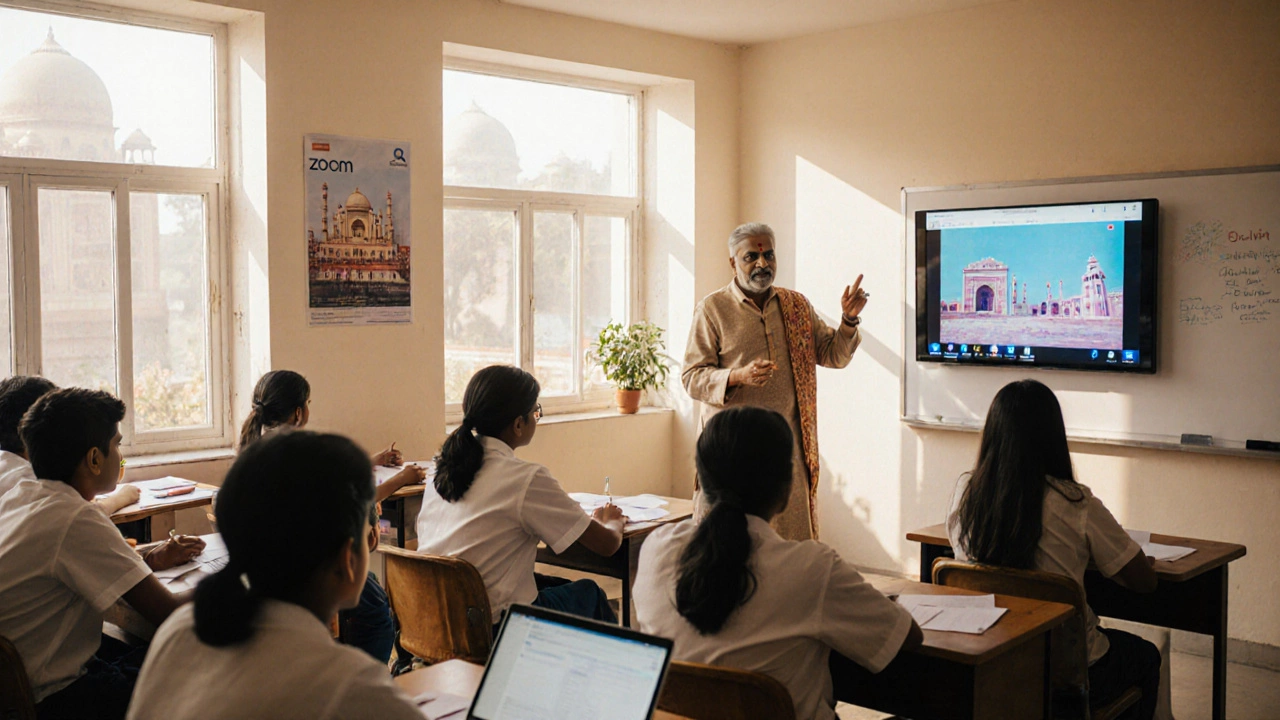Virtual Classroom: Practical Tips for Successful Online Learning
Ever wondered why the term "virtual classroom" keeps popping up in newsfeeds and school newsletters? It’s simply the digital version of a brick‑and‑mortar class – a place where teachers, students, and content meet on the internet. No fancy jargon, just a space where you can watch lessons, join discussions, and submit assignments without leaving your desk.
First off, know the basics. A virtual classroom usually includes a video‑conferencing tool (Zoom, Google Meet, Teams), a learning management system (Moodle, Canvas, Google Classroom), and a set of digital resources like PDFs, quizzes, and recorded lectures. When all three work together, you get a smooth experience that mimics a real‑world class.
Set Up Your Digital Space for Focus
Getting the most out of a virtual classroom starts with a solid setup. Choose a quiet spot, keep a headset handy, and make sure your internet connection is stable. A clutter‑free desk helps your brain stay on task, and a decent webcam lets you engage with classmates without feeling invisible.
Next, organize your files. Create a folder for each subject, and inside, separate sub‑folders for notes, assignments, and recordings. This habit saves time when a teacher asks for a specific file or when you need to review a missed lecture.
Study Strategies That Actually Work Online
Online learning can feel overwhelming because you’re juggling live sessions, recorded videos, and homework all at once. Break your day into short, focused blocks – 25‑minute “Pomodoro” sessions work great. During each block, watch a lecture or read a chapter, then spend five minutes summarizing what you learned in your own words.
Active participation is another game‑changer. Use the chat or raise‑hand feature during live classes to ask questions. When the session ends, post a quick comment in the forum about something that surprised you. This reinforces the material and signals to the teacher that you’re engaged.
Don’t forget the power of peer study groups. Many virtual classrooms have built‑in breakout rooms; if yours doesn’t, set up a WhatsApp or Discord channel with classmates. Explaining concepts to each other solidifies knowledge and makes the solo study grind less lonely.
Finally, take advantage of recordings. If a live lecture is hard to follow, replay it at 1.25x speed and pause to take notes. Most platforms let you add timestamps, so you can jump straight to the part you need later.
Virtual classrooms aren’t a passing fad – they’re here to stay, especially as schools blend online and offline teaching. By setting up a tidy digital workspace, using bite‑sized study sessions, and staying active in discussions, you’ll turn any virtual class into a productive learning experience.
Ready to give it a try? Pick one tip from each section, apply it this week, and notice how your focus and grades improve. The virtual classroom can be just as effective as a physical one – sometimes even more so – if you treat it with the right habits and tools.
Sep
27

- by Dhruv Ainsley
- 0 Comments
Is Zoom an eLearning Platform? Pros, Cons & Comparison
Explore whether Zoom qualifies as an eLearning platform, compare its features with dedicated LMSs, and discover real‑world classroom use cases.